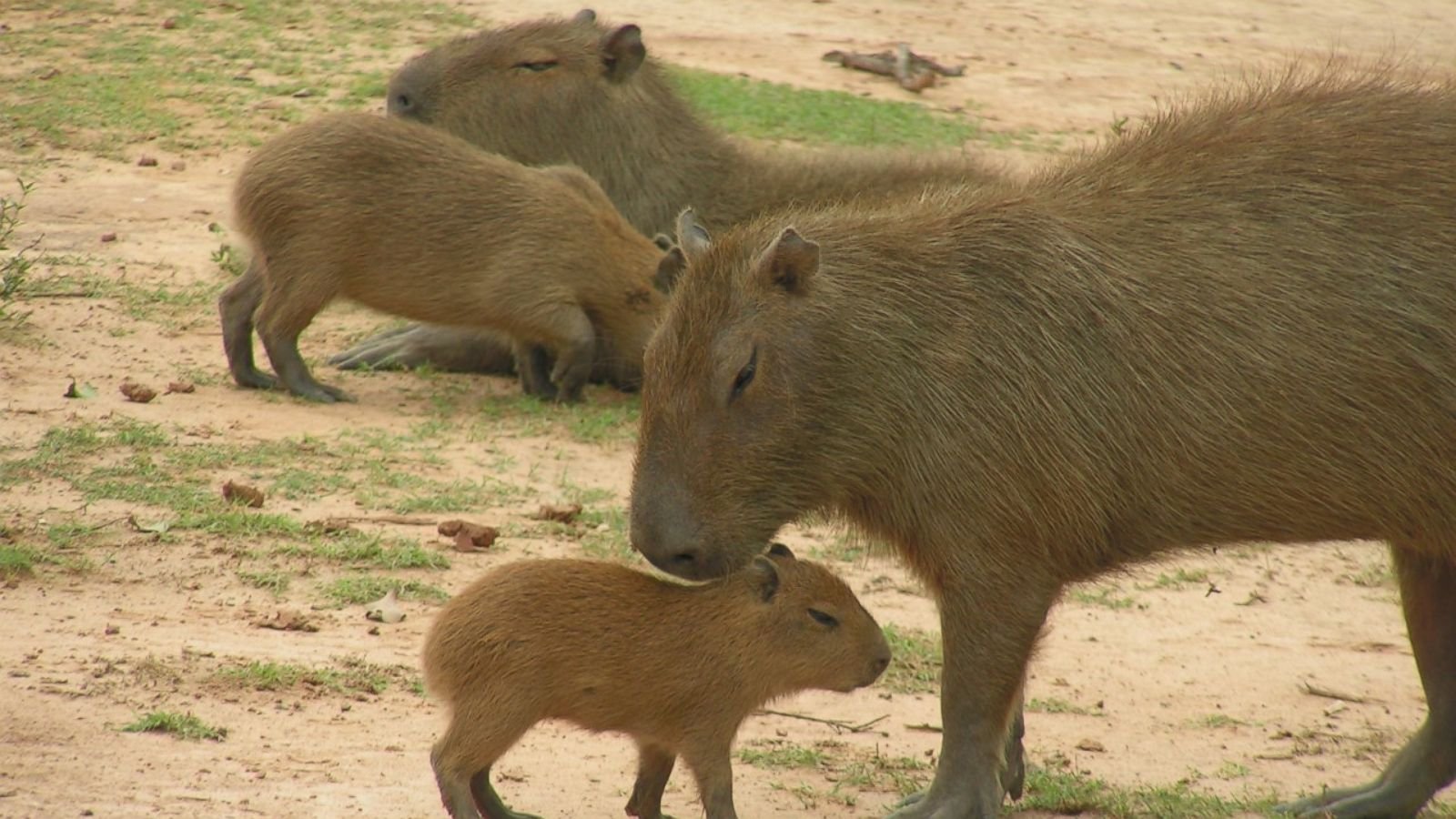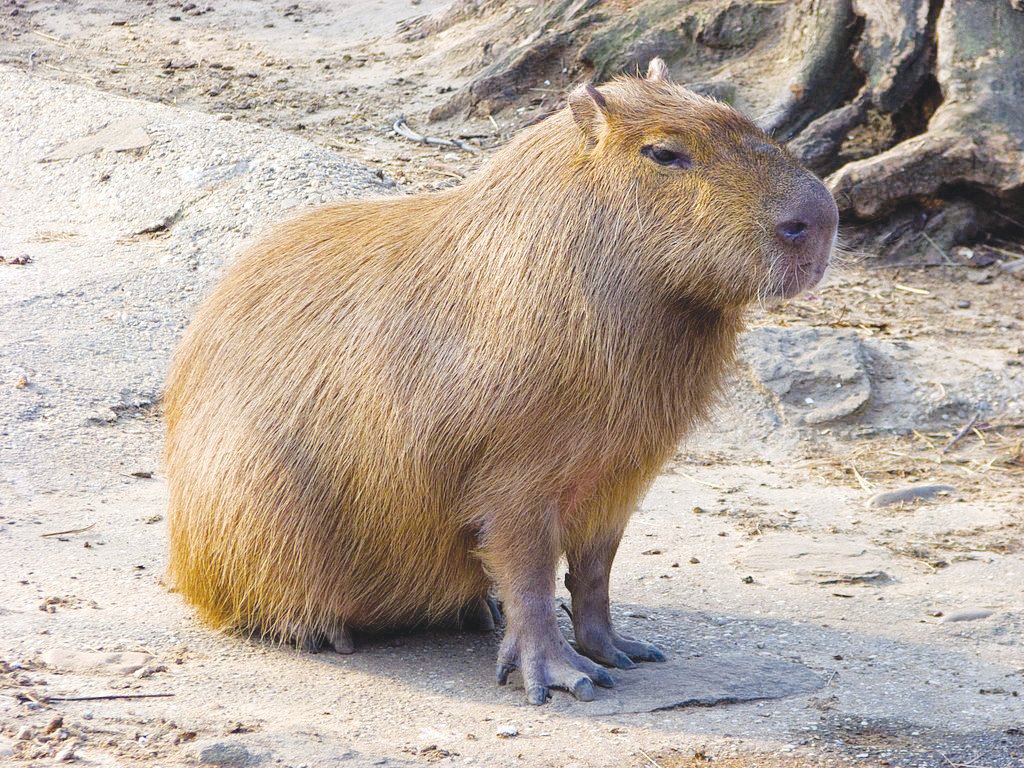Table of Contents
Imagine stumbling upon a creature that resembles a giant rodent, yet exudes an irresistible charm and friendliness that instantly captures your heart. Curiosity fills your mind and you ponder – are capybaras native to the United States? A country known for its diversity of wildlife, the question of whether these fascinating creatures roam freely on American soil is an intriguing one. Join us as we embark on a journey to uncover the truth and unravel the mystery behind the presence of capybaras in the land of the brave.

1. Capybaras: A Brief Introduction
1.1 What are capybaras?
Capybaras, the largest rodents in the world, are fascinating creatures that capture the imagination with their unique characteristics. They are semi-aquatic mammals native to South America and belong to the family Caviidae. With their adorable appearance and friendly demeanor, capybaras have gained popularity among animal lovers and wildlife enthusiasts alike.
1.2 Physical characteristics
Capybaras have a distinct appearance that sets them apart from other mammals. They have a stout yet agile body, with a short head and round ears. Their short, webbed feet allow them to navigate through various terrains, both on land and in water. With an average length of about 4 feet and weighing up to 150 pounds, they truly stand out in the animal kingdom. Their coarse fur ranges in color from reddish-brown to gray, providing excellent camouflage in their natural habitat.
2. Geographic Distribution of Capybaras
2.1 Natural habitat
Capybaras are primarily found in the tropical regions of South America, where they inhabit a variety of ecosystems. They thrive in environments such as swamps, marshes, and densely forested areas near rivers, lakes, and ponds. These water-loving creatures are well adapted to their habitat, as they are excellent swimmers and can hold their breath underwater for several minutes.
2.2 Native regions
Capybaras are native to countries such as Brazil, Argentina, Uruguay, and Paraguay. They are particularly abundant in the wetlands of the Pantanal in Brazil, where their numbers are significant. These regions provide the ideal conditions for capybaras to thrive, with ample access to water and vegetation, which form the basis of their diet.

3. Capybaras: Native or Non-Native Species in the United States?
3.1 Historical records
Capybaras were not historically native to the United States. However, there have been historical records documenting their presence in parts of Florida during the late 16th century. These early sightings were likely a result of explorers and European settlers bringing capybaras as exotic pets or for commercial purposes.
3.2 Establishment in the wild
Over the years, some capybaras managed to escape or were intentionally released into the wild. This led to small, localized populations of capybaras becoming established in regions of the United States where they were previously non-native. It is important to note that these established populations are limited in number and are not representative of a widespread distribution across the country.
3.3 Current populations
Currently, capybaras can be found in certain parts of Florida and Texas, where they have successfully established breeding populations. Although these populations are small and localized, they have garnered attention and interest from local residents and wildlife enthusiasts.
3.4 Conflicts and concerns
The presence of capybaras in the United States has raised concerns among some conservationists and landowners. There are worries that their expanding populations could potentially disrupt the delicate balance of native ecosystems and impact local fauna and flora. Managing these populations and addressing any potential conflicts requires careful monitoring and strategic conservation efforts.
4. History of Capybaras in the United States
4.1 Discovery by explorers
Capybaras first caught the eyes of European explorers when they arrived in South America. Fascinated by these unusual creatures, explorers began documenting their encounters with capybaras and the local indigenous peoples who interacted with them.
4.2 Early introductions
As trade between the Americas and Europe flourished, capybaras were transported across the Atlantic to Europe where they became exotic pets in royal courts and private menageries. This growing interest in capybaras eventually led to some individuals being brought to the United States, particularly during the colonial era.
4.3 Escaped or released individuals
Throughout history, capybaras have occasionally escaped captivity or been released into the wild. These escapees, coupled with deliberate releases by individuals who could no longer care for them, contributed to the establishment of small, feral populations of capybaras in parts of the United States.

5. Capybaras as Pets in the United States
5.1 Exotic pet trade
Capybaras have gained popularity in recent years as exotic pets, enticing some individuals to acquire them despite the unique needs and challenges they present. It is worth noting that keeping capybaras as pets requires specialized knowledge and appropriate facilities to ensure their well-being. Responsible ownership is paramount to prevent the accidental release or escape of capybaras into the wild.
5.2 Legality and regulations
The legality of owning a capybara as a pet varies across different states in the United States. Some states may require specific permits and licenses, while others prohibit their ownership altogether. It is crucial for potential owners to thoroughly research and comply with local regulations to ensure the welfare of these animals and avoid contributing to the problems associated with non-native populations.
6. Conservation Efforts and Management
6.1 Wildlife organizations
Various wildlife organizations and conservation groups are actively involved in monitoring and managing capybara populations in the United States. These organizations work closely with local authorities and landowners to develop strategies to prevent further spread and mitigate any potential negative impacts on native flora and fauna.
6.2 Control measures
In regions where capybaras have established breeding populations, control measures may be necessary to maintain their numbers at sustainable levels. These can include population surveys, habitat management, and, in extreme cases, targeted removal of individuals to prevent overpopulation. Well-informed and science-based management practices are crucial to ensure the long-term conservation of both capybaras and the ecosystems they inhabit.
6.3 Environmental impact
The presence of capybaras in the United States can potentially have both positive and negative environmental impacts. While these creatures contribute to the overall biodiversity of their new habitats and can act as a natural control for aquatic vegetation, their voracious feeding habits may also impact native flora. Ongoing research and monitoring are necessary to better understand the ecological repercussions and guide conservation efforts effectively.

7. Capybaras in Human Culture
7.1 Cultural significance
Capybaras hold cultural significance in their native South American countries. In some indigenous communities, they are revered as symbols of abundance, social harmony, and spiritual connections to water. These sentiments are often reflected in local folklore, traditional ceremonies, and cultural practices.
7.2 Representations in art and media
Capybaras’ unique appearance and gentle demeanor have made them popular subjects in art, literature, and media. Their adorable features have inspired numerous illustrations, sculptures, and even children’s books. In recent years, they have gained attention through internet memes and viral videos, spreading their charm and increasing public awareness about these intriguing creatures.
8. Interactions with Other Species in the United States
8.1 Ecological interactions
As with any non-native species, capybaras in the United States interact with local fauna and flora in their new environments. Understanding these interactions is essential for assessing their ecological impact. Capybaras often compete for food resources with native species, and their preferred habitat near water bodies can potentially disrupt local ecosystems.
8.2 Potential threats
Although capybaras are generally peaceful and coexist harmoniously with other species, their large size and herbivorous diet can cause some concern. In agricultural areas, capybaras may occasionally damage crops, leading to economic losses for farmers. Balancing the needs of capybaras and considering their potential impact on other species is crucial for successful conservation and management.

9. Capybara Observations and Sightings by Experts
9.1 Scientific studies
Scientists and researchers conduct studies and surveys to gather valuable data on capybaras’ behavior, habitat preferences, and population dynamics in the United States. These studies help improve understanding of their colonization patterns, resource utilization, and potential ecological impacts. By combining field observations with advanced scientific techniques, experts can inform effective conservation and management strategies.
9.2 Research and monitoring projects
Ongoing research and monitoring projects play a vital role in tracking capybara populations in the United States. Collaborative efforts between scientists, wildlife agencies, and local communities aim to collect data on capybara distribution, reproduction, and habitat usage. The insights gained from these projects are invaluable for assessing the long-term implications of capybaras’ presence and designing conservation plans accordingly.
10. Future Outlook: Capybaras in the United States
10.1 Spread and colonization
The future spread and colonization of capybaras in the United States are still uncertain. While their numbers remain relatively small and localized, appropriate management and public awareness can help prevent further expansion and potential ecological disruptions. Continued monitoring and research will provide valuable insights into their population dynamics and help guide decision-making for their long-term conservation.
10.2 Impacts on ecosystems
As capybaras continue to establish themselves in parts of the United States, it is crucial to carefully assess and understand their impacts on native ecosystems. By studying their interactions with other species and their effects on vegetation, scientists can predict and mitigate potential ecological changes. These findings will inform effective management strategies to maintain the ecological balance in affected habitats.
10.3 Conservation and management strategies
The conservation and management of capybaras in the United States require a collaborative effort between scientists, wildlife organizations, policymakers, and the public. Implementing comprehensive regulation and monitoring frameworks, raising awareness about responsible pet ownership, and promoting the conservation of native habitats are essential steps to ensure the long-term viability of capybara populations. By prioritizing their protection and addressing potential conflicts proactively, we can strive for a harmonious coexistence between capybaras and the diverse ecosystems they occupy.

